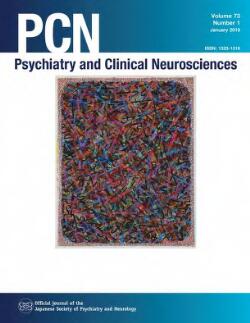苯二氮卓和 Z-催眠药的使用与心血管疾病风险的关系:一项针对中国 1,000 万人的前瞻性研究的启示
IF 6.2
3区 医学
Q1 CLINICAL NEUROLOGY
引用次数: 0
摘要
目的 评估中国北京市居民苯二氮卓类药物(BZDs)或Z-催眠药的使用与心血管疾病(CVD)发病率之间的关系。方法 我们纳入了2010-2017年期间在北京市职工医疗报销数据数据库中有BZDs或Z-催眠药处方记录的2,415,573人,以及同期有其他处方记录的8,794,356名非使用者。采用Cox比例风险模型计算了712 850名暴露者和712 850名未暴露者的危险比(HR)和95%置信区间(CI)。与非使用者相比,使用时间少于3个月者患心血管疾病的风险最低,使用时间超过5年者患心血管疾病的风险最高,HR分别为0.50(0.48,0.51)和1.78(1.72,1.83)。与未接触者相比,仅使用长效BZDs、短效BZDs或Z-催眠药中的一种的人患心血管疾病的风险相对较低。接触所有三种药物的人的风险最高,是未使用者的2.33(2.22,2.44)倍。结论BZD或Z-催眠药的使用一般与心血管疾病风险升高有名义上的联系。然而,对于短期、单一类型和中低剂量的使用者来说,不仅这种风险升高的现象消失了,而且药物的使用还显示出了保护作用。本文章由计算机程序翻译,如有差异,请以英文原文为准。
Association of benzodiazepine and Z‐hypnotic use with cardiovascular disease risk: insights from a prospective study of 10 million people in China
AimTo assess the association between Benzodiazepines (BZDs) or Z‐hypnotic use and cardiovascular diseases (CVD) incidence in residents in Beijing, China.MethodsWe included 2,415,573 individuals with a prescription record for BZDs or Z‐hypnotics in the Beijing Medical Claim Data for Employees database during 2010–2017, and 8,794,356 non‐users with other prescriptions for the same period. Hazard ratios (HR) and 95% confidence intervals (CI) were calculated using Cox proportional risk models for 712,850 exposed and 712,850 unexposed participants who were matched 1:1 by propensity score.ResultsBZDs or Z‐hypnotics users had a higher risk of CVD than non‐users, with an HR of 1.11 (95% CI: 1.10, 1.13). Compared with non‐users, those who used them for less than 3 months had the lowest risk of CVD, and those for more than 5 years had the highest risk, with HRs of 0.50 (0.48, 0.51) and 1.78 (1.72, 1.83), respectively. The risk of CVD was relatively low in those who used only one of the long‐acting BZDs, short‐acting BZDs, or Z‐hypnotics compared to unexposed individuals. Individuals exposed to all three types of drugs had the highest risk, 2.33 (2.22, 2.44) times that of non‐users. Users below the median dose had a lower risk of CVD compared to non‐users, whereas users exceeding the median dose had an increased risk.ConclusionBZD or Z‐hypnotic use in general was nominally associated with an elevated risk of CVD. However, for short‐term, single‐type, and low‐to‐moderate‐dose users, not only did this elevated risk disappear, but drug use also demonstrated a protective effect.
求助全文
通过发布文献求助,成功后即可免费获取论文全文。
去求助
来源期刊
CiteScore
7.40
自引率
4.20%
发文量
181
审稿时长
6-12 weeks
期刊介绍:
PCN (Psychiatry and Clinical Neurosciences)
Publication Frequency:
Published 12 online issues a year by JSPN
Content Categories:
Review Articles
Regular Articles
Letters to the Editor
Peer Review Process:
All manuscripts undergo peer review by anonymous reviewers, an Editorial Board Member, and the Editor
Publication Criteria:
Manuscripts are accepted based on quality, originality, and significance to the readership
Authors must confirm that the manuscript has not been published or submitted elsewhere and has been approved by each author

 求助内容:
求助内容: 应助结果提醒方式:
应助结果提醒方式:


